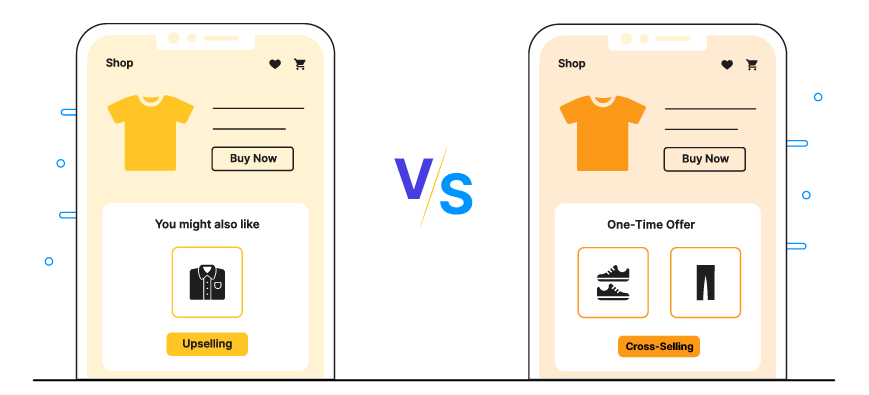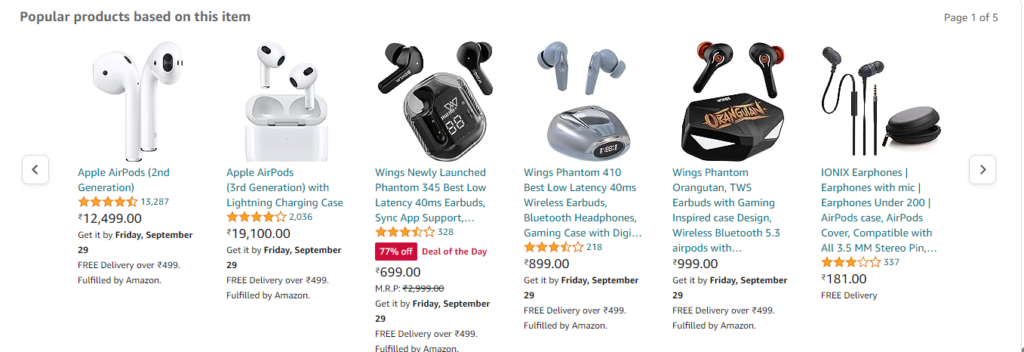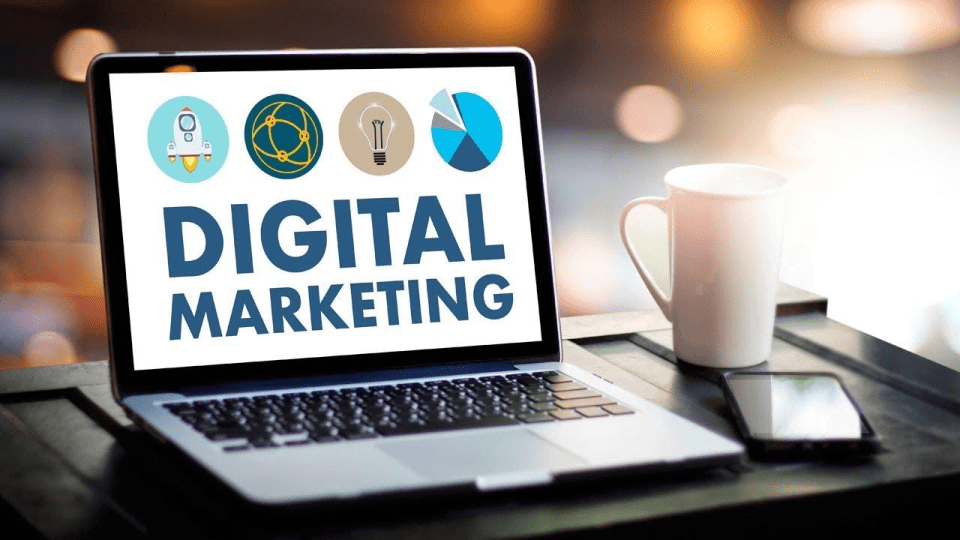Top 3 Examples Of Upsell Marketing & Cross-Sell Marketing
Successful businesses know that the easiest path to profitability isn't just gaining new customers but maximizing value from existing ones. Two key strategies for achieving this are upselling and cross-selling. Both are techniques that can boost sales, drive revenue, and increase customer satisfaction. Here, we dive into some impactful examples of upsell and cross-sell marketing.
1. Amazon's "Customers who bought this also bought"
Amazon's "Customers who bought this also bought" is a data-driven cross-selling technique that is prominently displayed on product pages. It aims to increase sales by suggesting additional products to customers based on their browsing and purchasing behavior. This feature is driven by data analytics and machine learning algorithms that analyze customer behavior to identify patterns and associations between different products.

Here's a detailed explanation of how Amazon's "Customers who bought this also bought" works:
- Data Collection: Amazon collects vast amounts of data on customer interactions, including browsing history, search queries, purchase history, and even items added to the shopping cart but not purchased. This data is stored and used to build a comprehensive profile of each customer's preferences and behavior.
- Data Analysis: Amazon's data science team employs sophisticated algorithms and machine learning techniques to analyze this massive dataset. They look for patterns, trends, and correlations among customers and products to identify relationships between items frequently bought together.
- Association Rules: One of the fundamental concepts behind this cross-selling technique is the use of association rules. These rules are used to identify which products tend to be bought together frequently. For example, if customers who buy a smartphone often also purchase a phone case, there is a strong association between these two products.
- Building Recommendations: Based on the association rules and customer behavior data, Amazon dropshipping software generates personalized product recommendations for individual customers. When a customer views a particular product, the algorithm fetches related products with the highest association strength and displays them as "Customers who bought this also bought."
- Real-Time Updates: The algorithm is dynamic and constantly updates based on real-time data. As customer behavior changes and new products are introduced, the recommendations adapt accordingly.
- Positioning On Product Pages: The "Customers who bought this also bought" section is strategically placed on product pages to capture the customer's attention at a critical moment when they are already interested in a specific item. This helps increase the likelihood of impulse purchases or additional item selections.
- A/B Testing: Like many features on Amazon's website, the "Customers who bought this also bought" section is likely subject to A/B testing. Different variations of the algorithm and its presentation may be tested to determine which approach generates the highest conversion rates.
2. Burger King’s Upsell & Cross-Sell Marketing
Burger King employs upsell and cross-sell strategies to boost sales and enhance customer satisfaction. For the same, they even integrated customer loyalty software into their overall approach. Let's delve into the upsell and cross-sell strategies of Burger King, including how customer loyalty software plays a role in it:
- Meal Combos & Upgrades: Burger King offers meal combos, such as "value meals," where customers can get a burger, fries, and a drink at a discounted price compared to buying each item individually. They often encourage customers to upgrade their meals to larger sizes for a nominal extra charge.
- Loyalty Program Offers: Burger King has introduced a customer loyalty program using customer loyalty software where customers can earn rewards and receive personalized offers based on their preferences and purchase history. The loyalty program enables targeted upsell and cross-sell promotions to members.
- Suggestive Selling At The Counter: In physical stores, Burger King staff is trained to use suggestive selling techniques. They prompt customers to consider add-ons like sides, desserts, or beverages when placing their orders, effectively driving cross-sell opportunities.
- In-App Upselling: Through their mobile app, Burger King can suggest additional items or upgrades to customers during the ordering process. For example, when a customer selects a burger, the app may offer an upsell of a larger-sized meal or a combo with a drink and fries.
- Digital Menu Displays: Burger King uses digital menu boards in some locations to display dynamic visuals and promotions. They can utilize these boards to showcase combo deals and limited-time offers, encouraging customers to make additional purchases.
- Limited-Time Promotions: Burger King frequently runs limited-time promotions and special offers. They use these time-sensitive deals to encourage customers to try new products or add complementary items to their orders.
- Bundling And Family Deals: Burger King offers bundles and family deals that cater to groups and families. These deals often include a mix of different menu items, creating upsell opportunities by encouraging customers to purchase larger quantities.
- Drive-Through Upselling: At the drive-through, Burger King staff is trained to suggest add-ons or limited-time promotions to customers, increasing the chances of cross-selling.
- Targeted Email Marketing: Burger King utilizes email marketing to reach its customer base with personalized offers and promotions. This includes upsell suggestions based on previous orders or customer preferences.
- App Notifications & Push Alerts: Burger King's mobile app may send push notifications to users with targeted offers, such as discounts on specific menu items or limited-time promotions that drive upselling.
3. Apple's Extended Warranties & AirPods Upsell
Apple's upsell strategy for extended warranties and AirPods is a well-crafted approach aimed at increasing the average order value and maximizing revenue per customer. The strategy involves various tactics and techniques designed to encourage customers to opt for extended warranties and consider purchasing AirPods along with their primary Apple device. Here's a detailed explanation of each upsell strategy:
Upsell Strategy For Extended Warranties (AppleCare+ and AppleCare Protection Plan)
- Pre-Purchase Information: Apple ensures that customers are well-informed about the benefits of extended warranties before making a purchase. On their website and during the checkout process, Apple provides clear and concise information about AppleCare+ and AppleCare Protection Plan. They highlight the advantages of extended warranty coverage, such as technical support, accidental damage protection, battery service, and convenient repairs.
- Visibility & Placement: Apple prominently displays the option to purchase an extended warranty during the checkout process for eligible products. It's often presented as an add-on or upsell option, encouraging customers to consider the additional coverage before completing their purchase.
- Personalization: Apple personalizes the upsell by tailoring the warranty options based on the customer's specific device and location. This ensures that customers receive relevant and accurate information about the available warranty coverage for their product.
- Bundling: Apple sometimes offers bundle deals that include an extended warranty with the purchase of a new device. These bundles present a compelling value proposition, making it more enticing for customers to opt for the extended warranty at a discounted price.
- Easy Purchase Process: Apple streamlines the purchase process for extended warranties, making it simple and convenient for customers to add coverage to their order with just a few clicks.
- Post-Purchase Follow-up: After a customer makes a purchase, Apple may send friendly reminder emails or notifications reminding them of the option to add an extended warranty. These gentle reminders serve as a way to re-engage the customer and increase the likelihood of upselling.
Upsell Strategy For AirPods
- Seamless Integration: Apple emphasizes the seamless integration of AirPods with its ecosystem of devices. They highlight how AirPods automatically pair with iPhones, iPads, and Macs, offering a smooth and effortless user experience.
- Product Differentiation: Apple clearly distinguishes AirPods from traditional wired earphones by highlighting their wireless capabilities, compact design, and advanced features like active noise cancellation (in AirPods Pro).
- Social Proof And Testimonials: Apple leverages social proof in marketing materials, showcasing satisfied customers enjoying their AirPods. Testimonials and positive reviews from influencers and celebrities add to the desirability of the product.
- Product Demonstrations: Apple Stores offer product demonstrations that allow potential customers to try AirPods in-store. This hands-on experience creates a stronger connection with the product and increases the likelihood of purchase.
- Exclusive Features: Apple may promote certain exclusive features or software capabilities that are only available when using AirPods with Apple devices. This encourages customers to choose AirPods for a more enhanced experience.
- Limited-Time Offers: Apple occasionally runs limited-time promotions, discounts, or bundles that include AirPods with the purchase of select Apple devices. These time-sensitive deals create a sense of urgency and added value for customers.
- Cross-Selling During Checkout: When customers are purchasing an Apple device, the website or store interface may suggest adding AirPods as a complementary accessory. This strategic placement during the checkout process increases the chances of a successful upsell.
Some More Notable Mentions For Upsell Marketing & Cross-Sell Marketing
- Booking.com’s "Upgrade Your Room" prompt: Booking.com suggests room upgrades or extended stay options (upselling) while also promoting car rentals, flight bookings, or local activities (cross-selling).
- GoDaddy’s upsell and cross-sell during checkout: When purchasing a domain name, GoDaddy offers a premium domain or longer-term plans (upselling). They also suggest adding hosting or security packages (cross-selling).
- Zara’s coordinated outfits suggestions: On their website, Zara often shows complete outfits when you click on a specific item. This encourages customers to buy the entire outfit or matching accessories (cross-selling).
- Adobe’s software packages: Adobe upsells by promoting its more expensive packages, offering more features and tools. Additionally, they cross-sell by proposing package deals with different software combinations.
- Spotify’s premium subscription: Spotify effectively upsells its free users to the ad-free premium version, offering better sound quality and offline listening. They also cross-sell by promoting other services like Hulu or Showtime at discounted rates.
- Dropbox’s enhanced storage plans: Dropbox successfully upsells its basic users to paid plans, offering more storage space. They cross-sell by offering package deals for businesses that include advanced features.
- Home Depot's "Frequently bought together" section: Home Depot cross-sells by suggesting items that customers often buy together, like paint and paintbrushes, thus increasing the order value.
Conclusion
Upselling and cross-selling are powerful marketing strategies that offer numerous benefits to businesses seeking to maximize value from their existing customer base. These techniques, when implemented effectively, can significantly boost sales, increase revenue, and enhance customer satisfaction. The top examples discussed in this article showcase the successful application of upselling and cross-selling in various industries, demonstrating their versatility and effectiveness.
By understanding customer preferences, offering relevant recommendations, and providing seamless integration of products, companies can unlock the full potential of upselling and cross-selling to create a win-win scenario for both themselves and their customers.







